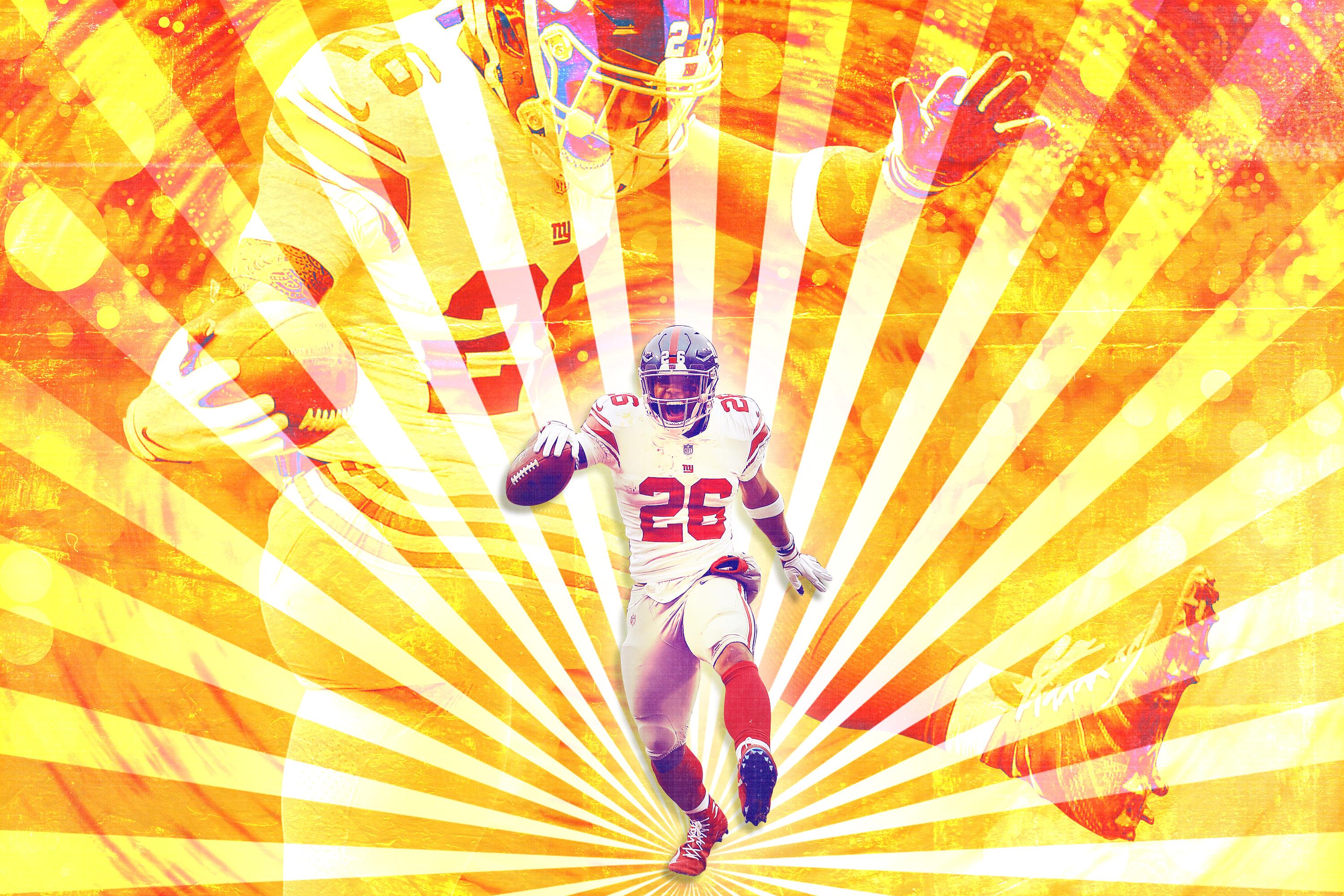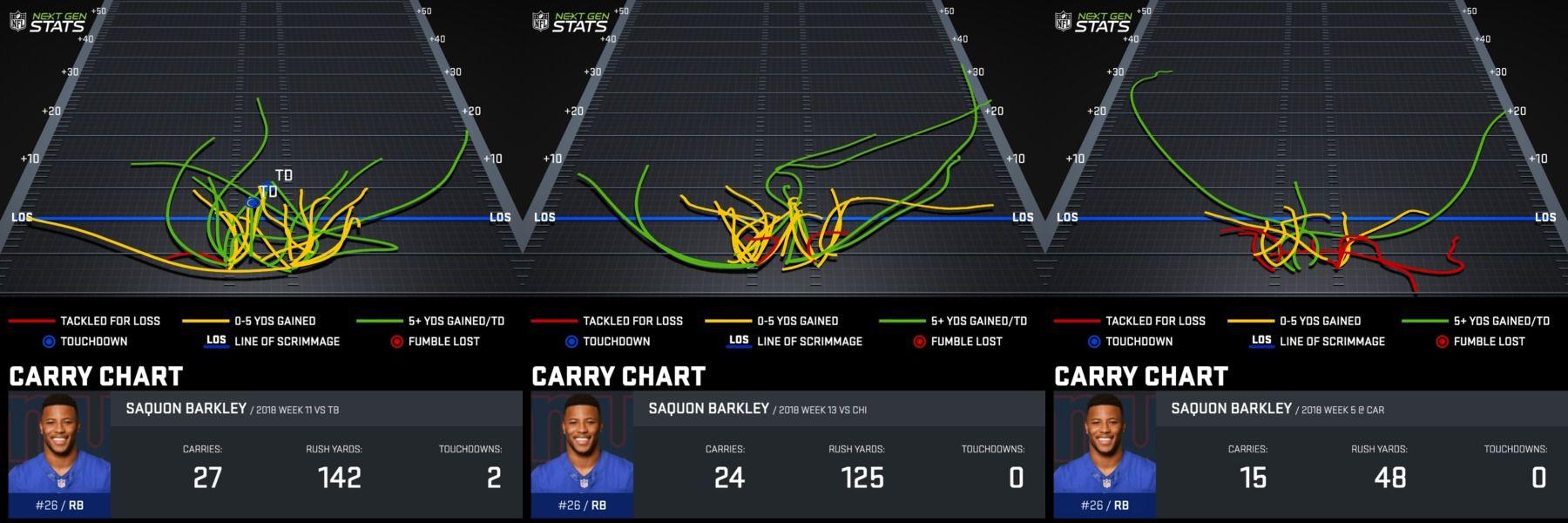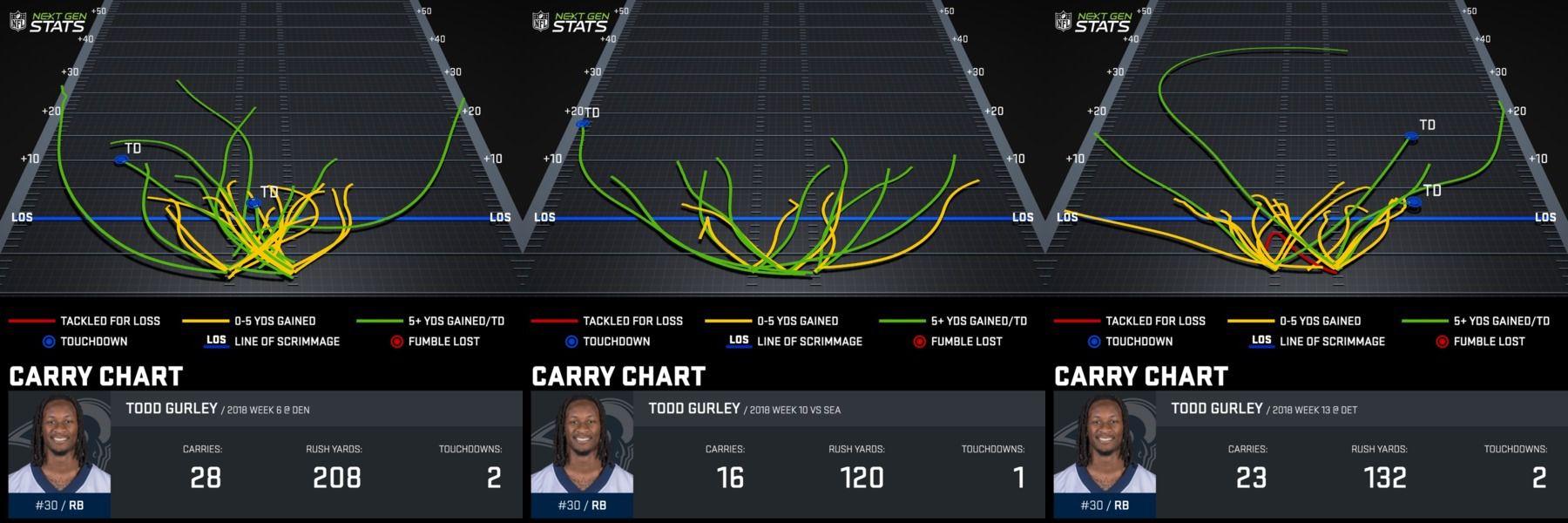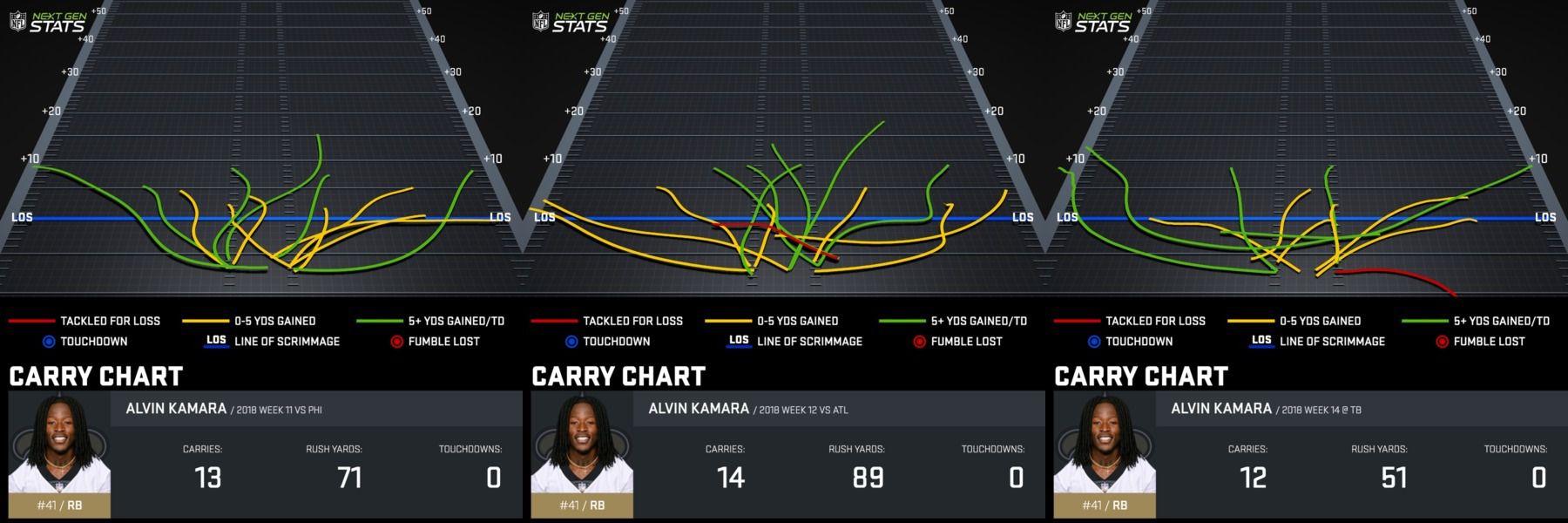
Last Sunday I saw Saquon Barkley do something I’d never seen him do before. It wasn’t a juke or a spin move, or some play in which he led seven defenders to the right before looping around and scoring a touchdown on the left. I’ve seen every seemingly impossible escape that he has somehow made possible. What Barkley did on Sunday was simpler. While scoring a 78-yard touchdown in a 40–16 rout of Washington, he pointed to the sky about 17 yards from the opposing end zone, then hopped over an imaginary hurdle as he crossed the goal line.
In college, Barkley would hurdle one defender and juke the next, then trot the remaining 30 yards to the end zone with little rejoicing. Maybe that’s because the college level has more stringent celebration rules; maybe he was just bored. While breaking off long runs at Penn State, he’d sometimes look over his shoulder to see if anyone was getting close. They never were.
He’s enjoying these runs in the NFL, though. Barkley hit another imaginary hurdle on a 51-yard touchdown scamper against the Eagles in Week 12.
Above are two of Barkley’s 50-plus-yard rushing touchdowns this fall, clips that should offer a pretty strong indication that the Giants made a smart pick by taking him second overall in the 2018 draft. After all, 50-plus-yard rushing touchdowns are rare. No NFL player has notched more than two in a season since Adrian Peterson in 2012, when the then-Vikings star eclipsed 2,000 yards rushing and was named league MVP. There have been only 18 50-plus-yard rushing touchdowns during the entire 2018 season.
Barkley has four of them, along with a 57-yard receiving score. Entering Week 15, he has 1,753 yards from scrimmage (second in the league) with 13 total touchdowns (fourth). He’s the NFL’s most explosive player. In college these plays were expected, and Barkley would jog into the end zone with the urgency of a man tired of repeatedly embarrassing the Akron Zips. In the pros, these aren’t supposed to happen so often. Barkley’s career, really, isn’t supposed to happen in an era when running back play has been dismissed as irrelevant. So for the first time, he seems to be enjoying himself on his way to the end zone.
He’s done more than just make big plays. Barkley is the only player in the league with more than 200 carries this season to average more than 5.0 yards per attempt — and the first player since 2013 to do so while racking up more than 500 receiving yards. (Barkley is also the first player since 2014 to have at least 1,000 rushing yards without losing a fumble, although that could change over the coming three weeks.)
In a year when five quarterbacks were taken in the first round of the draft, Barkley should run away with the Offensive Rookie of the Year award. (To be fair, running away with things is kinda his schtick.) His spectacular performances seem like a rebuke of the premise that exceptional running back play doesn’t matter in an era when the passing game is king. They also seem to contradict the notion that the Giants were wrong to use such a valuable pick on a position that’s continually seen its value plummet.
It’s true that a good quarterback is more valuable than even a great running back. But not all of the quarterbacks the Giants could have taken instead of Barkley will be good quarterbacks. In fact, the three QBs who went in the eight picks after Barkley — the Bills’ Josh Allen, the Cardinals’ Josh Rosen, and the Jets’ Sam Darnold — are the worst, second-worst, and third-worst quarterbacks in the league, respectively, by passer rating. Rookie QB stats can be unreliable indicators of future success, but I’d guess at least one of those three franchises would have been better off taking a star back like Barkley than a quarterback who will not pan out.
Then again, you could argue that Barkley’s spectacular season helps prove that a great running game doesn’t matter. Barkley has been even better than advertised, and the Giants are just 5–8. I’m going to stand by what I wrote before the draft: “If an NFL team drafts Barkley in the top five and treats him like a stereotypical running back, it will represent a wasted pick … but Barkley has a chance to contribute to the ongoing redefinition of what running backs can be.”
So far, the Giants are treating him like a stereotypical running back. Let’s take a look at a few of Barkley’s carry charts, via NFL Next Gen Stats:

Let’s compare this to some of Todd Gurley’s rush charts:

Or Alvin Kamara’s rush charts:

Or Melvin Gordon’s rush charts:

The Rams, Saints, and Chargers are three of the league’s best teams, and all three feature efficient ground games that complement their passing games. Looking at these charts, it’s easy to see how. They use variety! They run from sideline to sideline.
Meanwhile, Barkley has 119 carries this season that went between the two guards — over 56 percent of his total. These plays go for an average of 4.6 yards per carry. Barkley has had 88 rushes described as being outside the guards. These go for an average of 6.3 yards per carry.
Traditional football logic dictates that teams need to run the ball up the gut to set up big gains to the outside. This is simply not true! Gurley has 140 carries outside the guards this season (averaging 5.3 yards per carry) and just 100 inside the guards (4.3). Gordon has 81 carries outside the guards (6.6 ypc) and 70 inside the guards (3.5.) You can maintain efficiency by running more to the outside than the inside. The Giants are choosing not to despite having one of the best players at running outside in the game.
And yet, Barkley’s numbers are so good that they mask the Giants’ failure to use him in a way that could maximize their football success. They’re just having him run up the middle and hoping it works. It does, sometimes, because Barkley is one of the most talented players in the league.
The story of whether Barkley was a successful pick will, of course, take years to figure out. Jared Goff looked like a bust in Year 1 under Jeff Fisher, and now he’s leading the Rams to the forefront of the NFC. I’m not going to make a ruling on the long-term prospects of any of the five first-round QBs this year, no matter how many interceptions Darnold and Allen throw.
The difference with Barkley is that while these quarterbacks are being granted a long onboarding process, with most people acknowledging that they could take years to reach their potential, we can see right now that Barkley is the playmaker his college tape and combine measurables told us he’d be. But just because he’s broken loose for long touchdown after long touchdown doesn’t excuse the uninventive ways the Giants have deployed him. Between Barkley and Odell Beckham Jr., New York boasts two of the NFL’s most dynamic playmakers. How long will their skills be squandered?
We can no longer question whether Barkley was worth a top-two pick. He was. The question is whether being picked by the Giants will ultimately be worth it for Barkley.